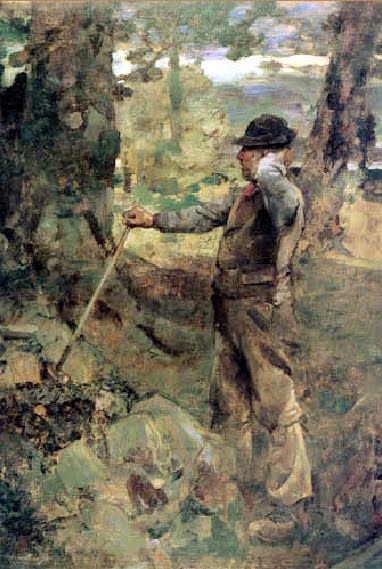Na Europa do séc. XIX cerca de 80% da população era analfabeta e dependia da agricultura de sobrevivência. A tecnologia era diminuta. Tal como no passado (catedrais, pontes, etc.)os governos dos diversos países absorviam nas obras públicas a mão-de-obra que trocava o campo pelas cidades. A pedra era elemento básico nestes trabalhos. Uma das profissões fundamentais era a dos trabalhadores que arrancavam e talhavam a pedra.
In 19th century in Europe 80% of the population was illiterate and relied on agriculture for survival. The technology was limited. As in the past (cathedrals, bridges, etc..) Governments of various countries on public works absorbed the manpower that changed the field by cities. The stone was a basic element in this work. One of the key professions was the workers who drew and carved stone.
John Brett (1831-1902)-'the stone breaker'-oil on canvas-(1857-1858) Liverpool-National Museums (Walker Art Gallery)
Edwin Henry Landseer (1802-1873)-'the stone breaker and his daugter' London-Victoria and Albert Museum
Jean-Desiré Gustave Courbet (1819-1877)-'the stone breakers'-oil on canvas-1849 Dresden-Gemäldegalerie
James Guthrie (1859-1930)-'the stone breakers'- oil on canvas-1886 Private collection
Giovanni Giacometti (1868-1933)-'the stone breakers at Lungotevere'-oil on canvas-1893 Winterthur (Switzerland)-Oskar Rheinhart Foundation





No comments:
Post a Comment